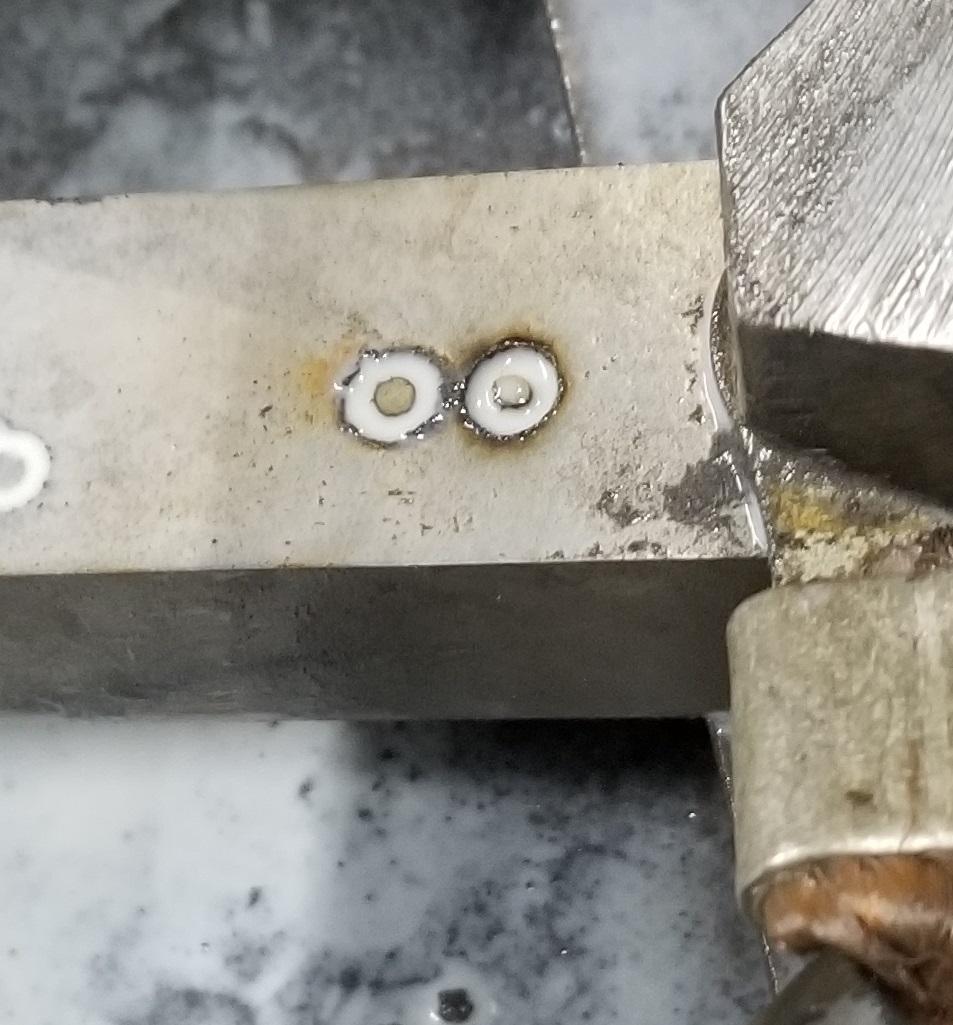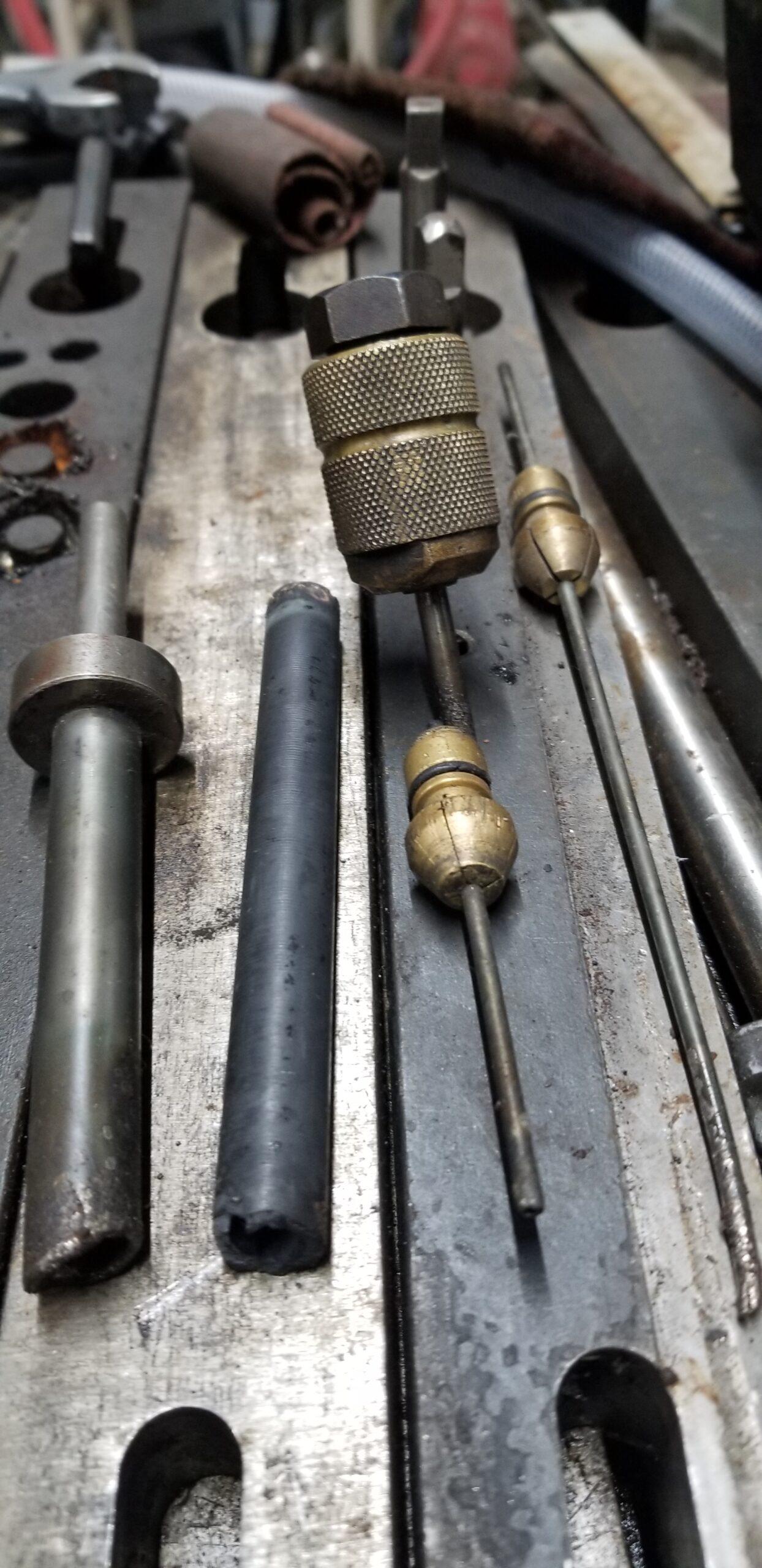What Material is Most Efficient in the Disintegration Process?
First of all, what is an Electrode?

An electrode is an electrical conductor, Electro Arc electrodes, formerly referred to as Disintrodes, are hollow tubing made of graphite, copper, or Molybdenum.
Electro Arc machines will operate with any material that conducts electricity as the electrode. Metal disintegration works on the principle of vibration, electrical spark, and coolant. The cutting power is a low voltage rectified DC current. Sixty sparks are discharged a second between the electrode and the workpiece. The coolant is passed through the hollow electrode onto the workpiece causing a thermal shock (heat and coolant). The material is fractured into minute particles and washed away by coolant. Both the electrode and the workpiece erode during the cutting process. With this in mind, the following information should then be considered.
Melting Temperature of various materials:
Molybdenum 4600 degrees F
Copper 2000 degrees F
Brass 2000 degrees F
Steel 2500 degrees F
It is important to use an electrode material that will break down less than the workpiece. Molybdenum has this advantage. The melting temperature is double that of the other electrode materials, which means you will erode more of the broken tool and less of the electrode. The disintegrating time will be faster and the labor cost lower. In comparison, other lower melting materials, such as copper, erode as rapidly as the work material raising the labor cost for removing broken tools. Molybdenum is a more expensive material to use as the electrode; however, the savings in labor in removing broken tools more than justifies the cost – a proven fact in the industry for over 25 years. Thousands of disintegrator customers use molybdenum or comparable high-priced material in the electrical discharge process.
Electro Arc electrodes are recommended for removing broken taps, drills or disintegrating any other hardened materials. A 12″ long electrode will remove approximately 30-35 taps. Studs and bolts, because they are not as hard as taps and drills, will cause the electrode to erode somewhat faster.
Electrode chart for removing various size screws:
1/4″ diameter screw requires a .200 diameter electrode
5/16″ diameter screw requires a .250 diameter electrode
3/8″ diameter screw requires a .290 diameter electrode
1/2″ diameter screw requires a .375 diameter electrode
9/16″ diameter screw requires a .437 diameter electrode
5/8″ diameter screw requires a .500 diameter electrode
3/4″ diameter screw requires a .625 diameter electrode
7/8″ diameter and larger screw should be removed by making two or three holes in the screw or bolt.
The diameter of these electrodes are close to the tap drill size for various threaded holes. After disintegrating you should be able to run a tap into the hole to remove the remaining shell. When making two or more passes to remove a stud, a certain amount of picking time is required to remove the remaining pieces.
Please see sizing an electrode for information about which electrode to use for an AC machine, which electrode to use for a DC machine, which electrode to use for a bolt eater, and methods to remove bolts, dowel pins, and drills with graphite electrodes or molybdenum electrodes. Contact us to purchase electrodes.
-
 Chuck Lock Nut$98.39
Chuck Lock Nut$98.39 -
 Collet .040$61.49
Collet .040$61.49



